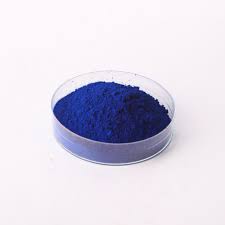industrial indigo
Industrial Indigo A Journey Through History and Innovation
Indigo, a dye derived from the plant Indigofera tinctoria, has been used for centuries to create vibrant blue textiles. Its deep hue was once a symbol of wealth and status, reserved for the garments of the elite. However, the significance of indigo transcends mere aesthetics; it carries a storied history intertwined with industrial advancements, cultural significance, and environmental considerations.
The journey of industrial indigo began in antiquity
. Historical records suggest that indigo dyeing practices originated in India around 4000 years ago. The method of extracting the dye involved fermenting the leaves of the indigo plant, a process that not only required skill but also demonstrated early textile techniques. As trade routes expanded, indigo made its way to Europe, where it was embraced for its vivid color and durability. By the Middle Ages, indigo had become a sought-after commodity, leading to its cultivation in various regions, including Africa and the Americas.The Industrial Revolution marked a pivotal moment for indigo production. The introduction of synthetic dyes in the late 19th century, particularly aniline dyes, revolutionized the textile industry. While synthetic dyes offered a cheaper and more consistent product, the legacy of natural indigo persisted. Historically, the production of indigo was labor-intensive, relying heavily on traditional farming and dyeing practices, often involving entire communities in the process.
The transition from artisanal to industrialized practices in dyeing introduced both challenges and innovations. Textile manufacturers began to experiment with chemical processes to replicate the color and properties of natural indigo. However, the industrialization of indigo production also raised ethical and environmental concerns. Historically, indigo plantations often relied on the exploitation of labor, particularly in colonial contexts. In the Americas, the demand for indigo led to the establishment of slave-driven economies, leaving a lasting impact on social structures and communities.
industrial indigo

As consumers became more conscious of the implications of their purchases, the demand for sustainable and ethically produced indigo has increased. The resurgence of interest in natural indigo has given rise to small-scale farming and artisanal production methods. These practices not only offer a more sustainable alternative but also revive traditional techniques that have been passed down through generations. Institutions around the world are now promoting organic indigo farming, which fosters biodiversity and contributes to soil health, while also supporting local economies.
In recent years, fashion brands have embraced the trend towards sustainable materials, leading to the revival of natural indigo in contemporary designs. Designers increasingly incorporate indigo dye in their collections, often highlighting the dyeing process itself as a form of artistry. This new appreciation for indigo aesthetics reflects a broader trend towards valuing craftsmanship and environmental responsibility in the textile industry.
Moreover, the cultural significance of indigo cannot be overlooked. In many societies, indigo has deep roots in cultural practices, rituals, and identity. In India, for example, traditional indigo dyeing techniques are part of the cultural heritage, passed down through generations by artisan communities. Similarly, in Japan, the art of shibori, a resist-dyeing technique, showcases the beauty and complexity of indigo textiles.
As we move forward, the industrial indigo narrative continues to evolve. The blend of tradition and innovation presents exciting possibilities for the future of textile production. The challenge lies in balancing the demand for beautiful, high-quality products with sustainable and ethical practices. By embracing both the historical significance and contemporary relevance of indigo, we can foster a more equitable and environmentally friendly textile industry.
In conclusion, industrial indigo represents a fascinating intersection of history, culture, and technology. It tells a story of transformation from ancient practices to modern innovations, highlighting both the beauty of human creativity and the consequences of our choices. As we continue to navigate this rich legacy, the future of indigo will undoubtedly reflect our evolving values and aspirations for sustainability and social responsibility.
-
Sulphur Black Dyes in Daily Use
NewsMay.07,2025
-
Indigo Dyeing for Daily Life
NewsMay.07,2025
-
Indigo Dye Production and Its Growing Demand
NewsMay.07,2025
-
Color That Lasts
NewsMay.07,2025
-
Bromo Indigo for Modern Use
NewsMay.07,2025
-
Blue From Nature
NewsMay.07,2025
-
The Timeless Color in Fashion and Textiles
NewsApr.10,2025

Sulphur Black
1.Name: sulphur black; Sulfur Black; Sulphur Black 1;
2.Structure formula:
3.Molecule formula: C6H4N2O5
4.CAS No.: 1326-82-5
5.HS code: 32041911
6.Product specification:Appearance:black phosphorus flakes; black liquid

Bromo Indigo; Vat Bromo-Indigo; C.I.Vat Blue 5
1.Name: Bromo indigo; Vat bromo-indigo; C.I.Vat blue 5;
2.Structure formula:
3.Molecule formula: C16H6Br4N2O2
4.CAS No.: 2475-31-2
5.HS code: 3204151000 6.Major usage and instruction: Be mainly used to dye cotton fabrics.

Indigo Blue Vat Blue
1.Name: indigo blue,vat blue 1,
2.Structure formula:
3.Molecule formula: C16H10N2O2
4.. CAS No.: 482-89-3
5.Molecule weight: 262.62
6.HS code: 3204151000
7.Major usage and instruction: Be mainly used to dye cotton fabrics.

